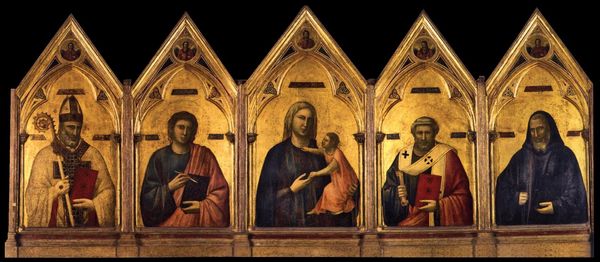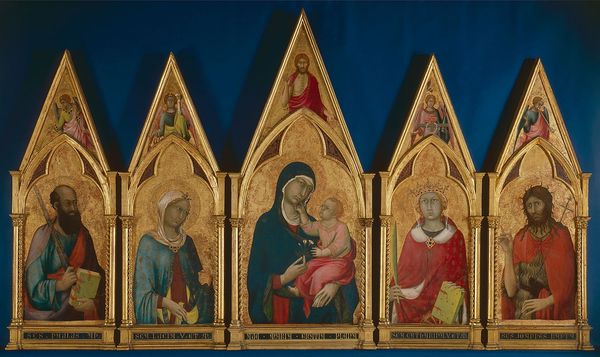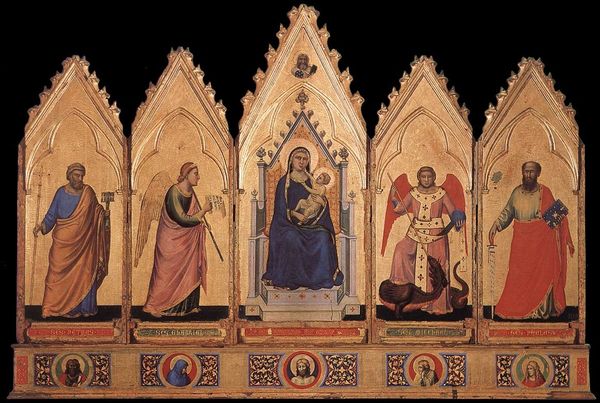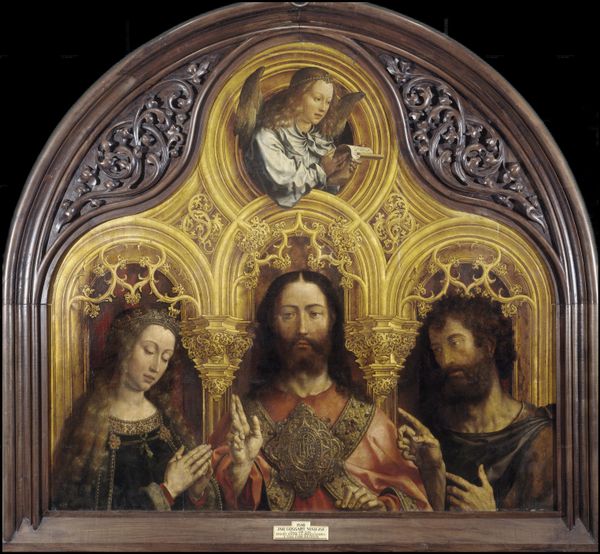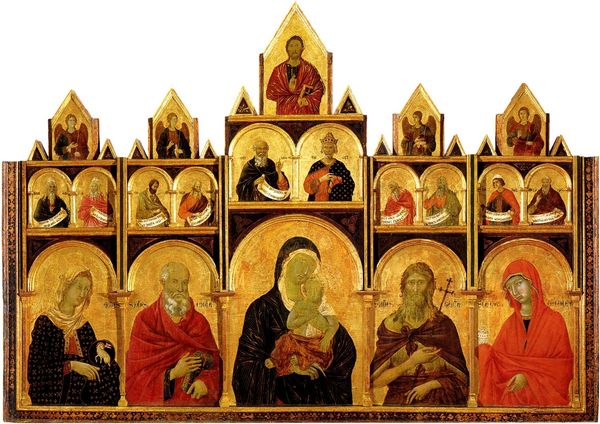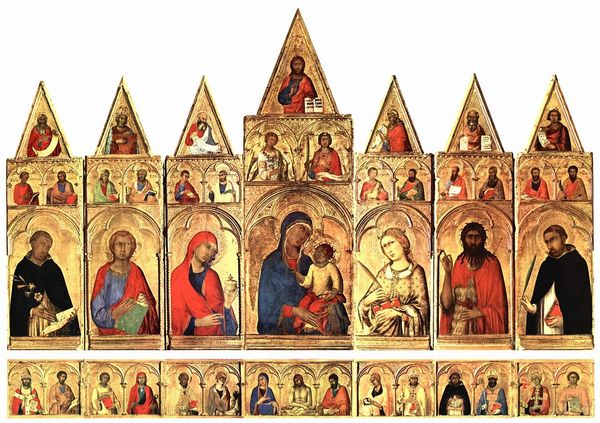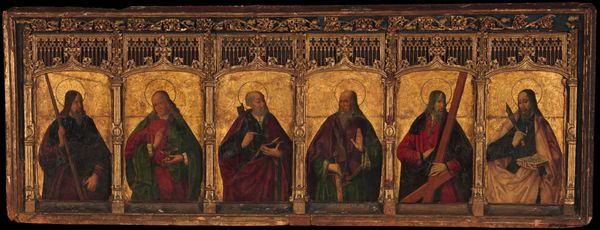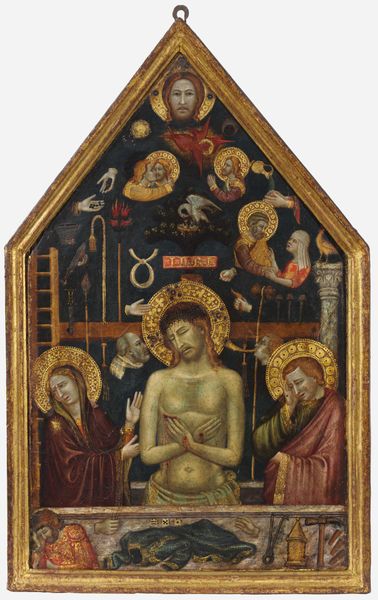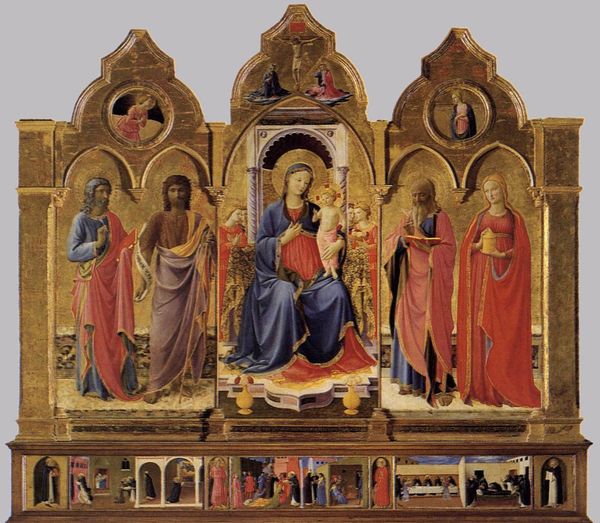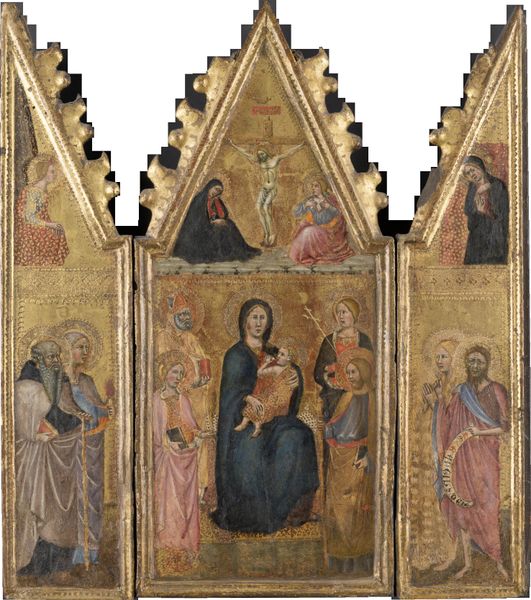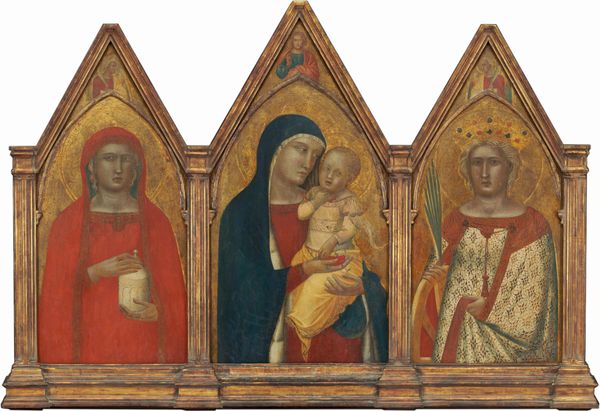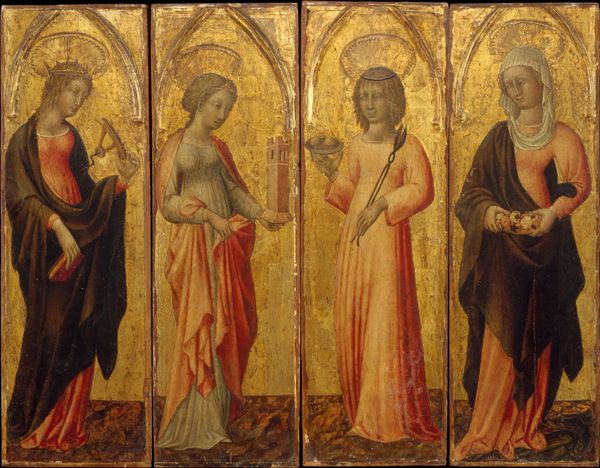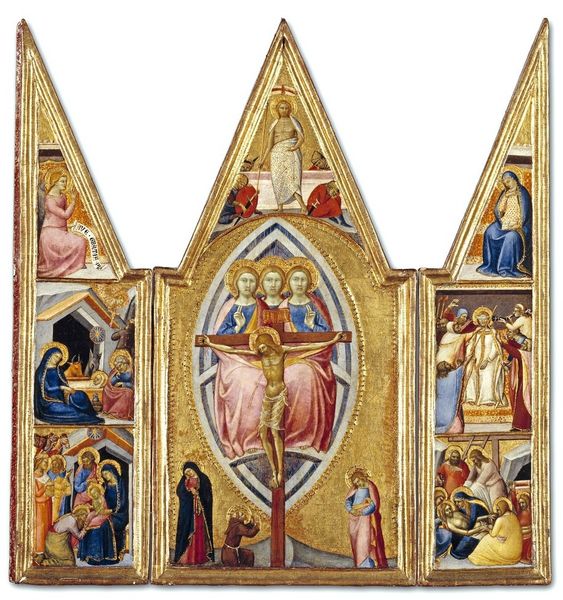
tempera, painting, oil-paint, fresco
#
portrait
#
medieval
#
narrative-art
#
tempera
#
painting
#
oil-paint
#
figuration
#
fresco
#
oil painting
#
christianity
#
history-painting
#
italian-renaissance
#
early-renaissance
#
christ
Copyright: Public domain
Curator: Here we have Giotto’s "Peruzzi Altarpiece," created around 1315 using tempera and oil on wood. Its a five-part polyptych dominated by gold. Editor: Immediately, the figures strike me as rather severe and stoic. Their arrangement feels almost confrontational despite the supposed divinity of the figures. I’m keen to unravel the social narratives they suggest. Curator: I'd say the composition itself is crucial. The geometric arches encasing each figure create individual yet connected spaces, forming a harmonious whole. Observe how Giotto utilizes color, predominantly the deep reds and blues juxtaposed with the radiant gold. The tonality establishes a certain spiritual gravitas. Editor: But isn't it telling that figures like St. Francis of Assisi, known for his radical commitment to poverty, are enshrined in this golden splendor? How might a viewer, struggling with poverty in Giotto’s time, perceive this gilded cage? And why do only some figures have halos? Curator: Well, considering its intended placement in the Peruzzi family chapel of Santa Croce, this altarpiece served primarily as a visual expression of devotion, commissioned for a powerful banking family, you see. Its symmetry, the considered gaze of each figure, is all to provoke religious contemplation. Each panel offers a study in form and balance. Editor: True, but consider the narrative implications: we're presented with sanctioned male figures. How does this reify societal norms of its day? How is female piety articulated in its absence, despite the potential figure of Mary being in the lineup? I suggest its formal achievements cannot be divorced from the socio-political realities it inherently reflects. Curator: A painting holds multifaceted meaning. Perhaps the point, simply, is to bring about the divine by elevating humanism. Thank you for the considerations! Editor: And thank you! Hopefully this examination provided a glimpse into how art pieces can be both a mirror and a window into humanity.
Comments
No comments
Be the first to comment and join the conversation on the ultimate creative platform.
